Have you ever dreamed of wandering through streets painted in fifty shades of blue? Welcome to Chefchaouen Morocco, where every corner tells a story and every photograph looks like it belongs in a fairy tale. This enchanting city, nestled in the heart of the Rif Mountains, isn’t just another destination on your Morocco itinerary—it’s an experience that will leave you questioning whether you’ve stepped into a real place or a vivid dream.
I’ve had the privilege of exploring Morocco’s hidden gems for over a decade, and I can tell you that Chefchaouen holds a special place in every traveler’s heart. Whether you’re planning your first visit or returning for another dose of its magical charm, this comprehensive guide will help you make the most of your time in Morocco’s most photogenic city.
Table of Contents
Why Chefchaouen is Called the Blue Pearl of Morocco
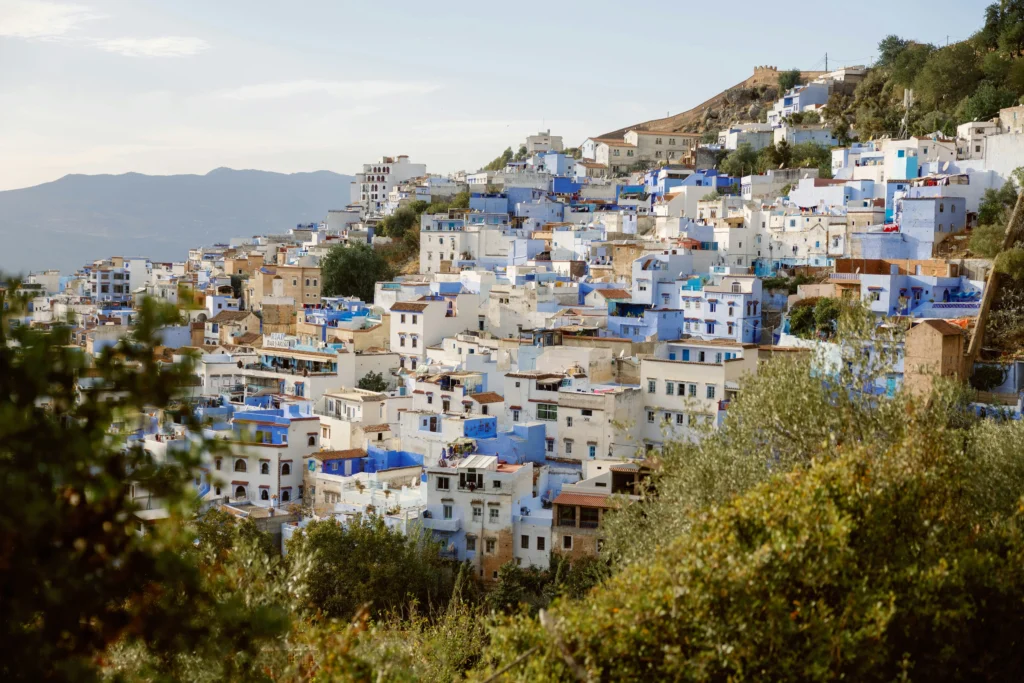
Walking through Chefchaouen feels like diving into an ocean of tranquility. The city earned its nickname “The Blue Pearl” for obvious reasons—nearly every building in the old medina is painted in varying shades of blue, from powder blue to deep cobalt. But why blue, you might wonder?
The History Behind the Blue-Painted Walls
The tradition of painting buildings blue dates back to the 1930s when Jewish refugees fleeing the Spanish Inquisition settled in Chefchaouen. In Jewish culture, blue represents the divine and serves as a reminder of God’s presence. The color also has practical benefits—it repels mosquitoes and keeps homes cooler during Morocco’s hot summers.
“Chefchaouen isn’t just a city; it’s a living canvas where every brushstroke tells the story of cultural harmony and resilience.” – Local historian Ahmed Benali
Cultural Significance of the Blue Color
Today, the blue walls have become more than just tradition—they’re a symbol of peace and serenity. Locals continue to repaint their homes annually, usually before Ramadan, maintaining this centuries-old practice that transforms the city into an Instagram photographer’s paradise.
Top 10 Must-Visit Attractions in Chefchaouen Morocco
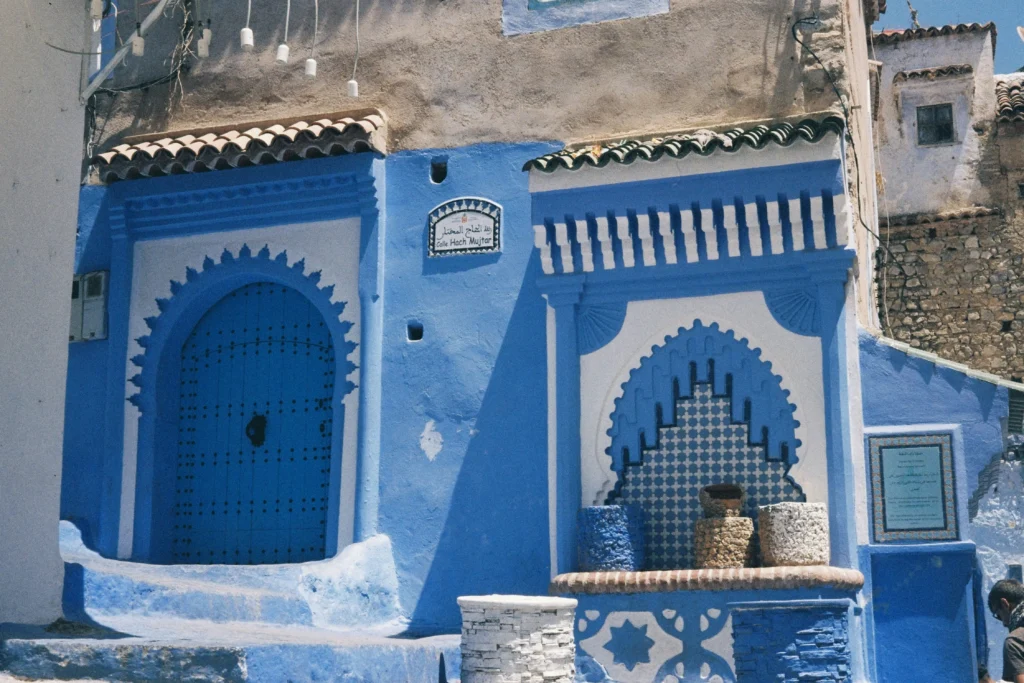
The Historic Medina and Its Winding Streets
The heart of Chefchaouen Morocco lies within its medieval medina, a UNESCO World Heritage candidate. Unlike the chaotic souks of Marrakech or Fez, Chefchaouen’s medina feels intimate and peaceful. Spend at least half a day getting pleasantly lost in its labyrinthine streets, where every turn reveals a new shade of blue and friendly locals who genuinely enjoy sharing their city’s stories.
Pro Tip: Visit the medina early morning (7-9 AM) for the best lighting and fewer crowds. This is when you’ll capture those Instagram-worthy shots without photobombing tourists!
Kasbah Museum and Ethnographic Exhibits
The 15th-century Kasbah houses an excellent ethnographic museum showcasing Berber artifacts, traditional costumes, and historical photographs. The highlight? Climbing to the top of the tower offers breathtaking panoramic views of the blue city and surrounding mountains. Entry costs 20 MAD (about $2 USD), making it one of Morocco’s best bargains.
The Great Mosque and Plaza Uta el-Hammam
Plaza Uta el-Hammam serves as Chefchaouen’s social hub, where locals gather for evening conversations over mint tea. The 15th-century Great Mosque, with its unique octagonal minaret (unusual for Morocco), dominates the square. While non-Muslims cannot enter, the exterior architecture is stunning, especially when illuminated at sunset.
Ras El Maa Waterfall: Nature’s Refreshing Escape
A 20-minute walk from the medina leads to Ras El Maa, a small but refreshing waterfall where locals do their laundry and children play. It’s not Niagara Falls, but the journey through olive groves and the chance to see authentic local life makes it worthwhile. Pack a picnic and enjoy lunch by the cascading water.
Best Photography Spots in Chefchaouen for Instagram-Worthy Shots
Blue Alleyways and Doorways
The most photographed spots include Rue Targhi and the stairs leading to the Spanish Mosque. But here’s a local secret: venture into the residential areas beyond the main tourist routes. Streets like Rue Moulay Ali Ben Rachid offer equally stunning blue vistas without the crowds.
Local Secret: The best lighting occurs during “golden hour” (one hour before sunset) when the blue walls take on a magical purple hue. Most tourists miss this because they’re having dinner!
Panoramic Views from the Spanish Mosque
The hike to the Spanish Mosque (Mezquita Española) takes about 45 minutes and offers the most spectacular views of Chefchaouen. The mosque itself was never completed, but the viewpoint is legendary among photographers. Start your hike 90 minutes before sunset to secure the best spot—this place gets crowded during peak season!
Authentic Experiences: What to Do in Chefchaouen Morocco
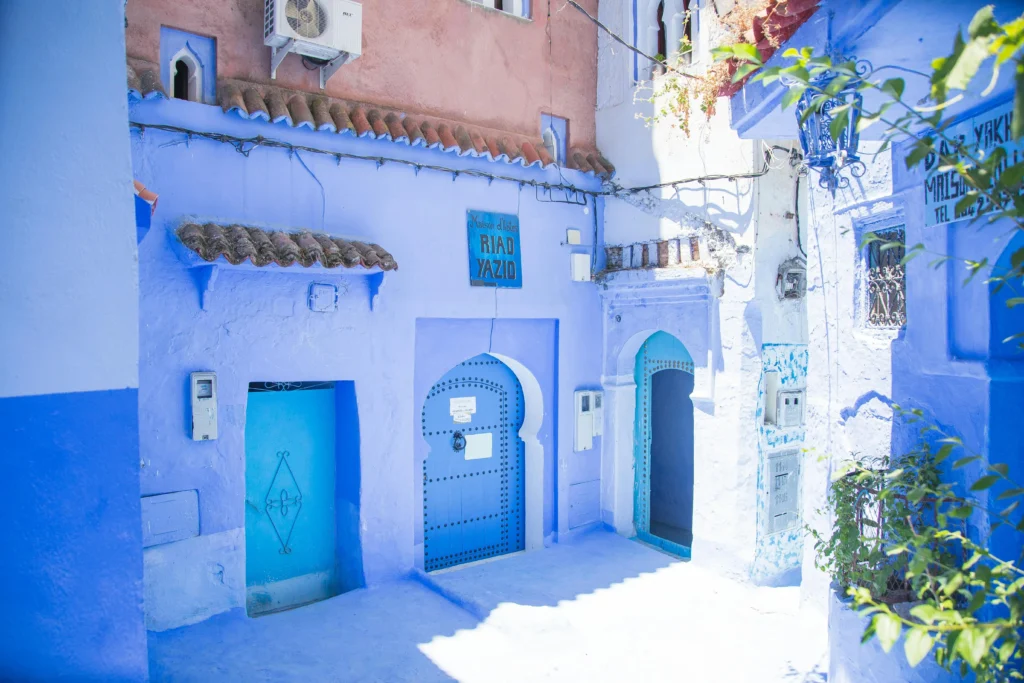
Shopping for Local Crafts and Textiles
Chefchaouen is famous for its high-quality woolen goods, particularly djellabas (traditional robes) and blankets. The local cooperative on Rue Hassan II offers fair-trade products directly from local artisans. Unlike other Moroccan cities, haggling here is gentler and more respectful—expect to pay 60-70% of the initial asking price.
Traditional Moroccan Cuisine and Local Restaurants
Don’t miss trying bissara (fava bean soup) at Café Clock, or sample fresh goat cheese at Restaurant Beldi Bab Ssour. The local specialty is kefta tagine, made with herbs grown in the surrounding mountains. Most meals cost between 50-80 MAD ($5-8 USD).
“The flavors of Chefchaouen are as rich and layered as its blue-painted walls—each bite tells a story of mountain traditions and Mediterranean influences.” – Chef Fatima Lahlou
Hiking Adventures in the Rif Mountains
Chefchaouen Morocco serves as the perfect base for exploring the Rif Mountains. Popular day hikes include the trail to Jebel el-Kelaa (1,616m) and the God’s Bridge natural arch. If you’re planning a tailor-made Morocco tour, consider adding multi-day trekking experiences to your itinerary.
Best Time to Visit Chefchaouen Morocco
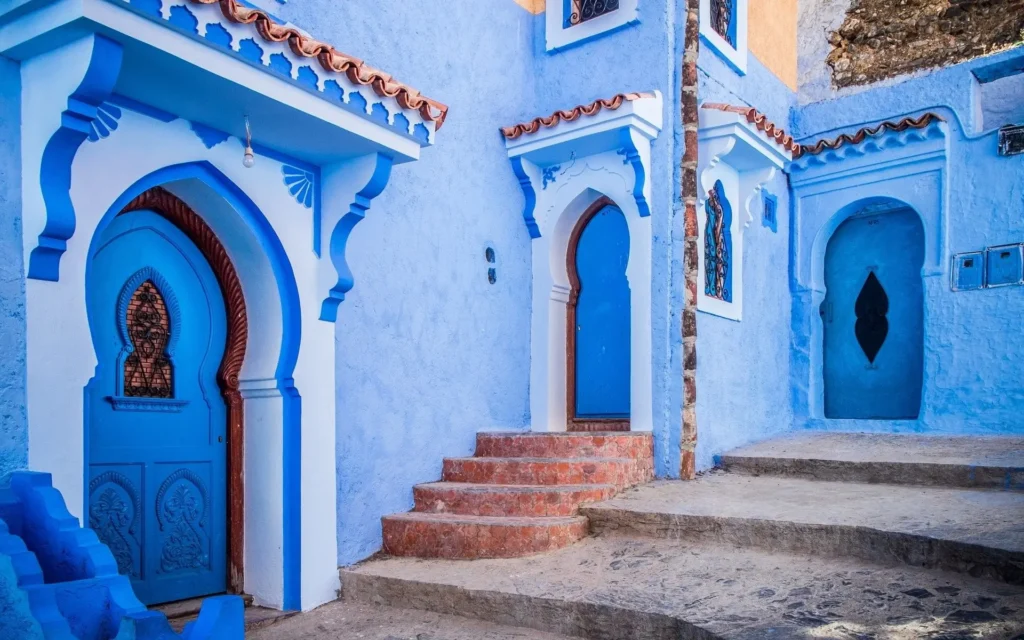
Weather Patterns Throughout the Year
Spring (March-May): Perfect weather with temperatures around 20-25°C (68-77°F). Wildflowers bloom in the surrounding mountains, creating spectacular hiking conditions.
Summer (June-August): Hot and dry with temperatures reaching 35°C (95°F). The blue walls provide natural cooling, but plan indoor activities during midday hours.
Fall (September-November): Ideal weather returns with comfortable temperatures and crystal-clear mountain air. This is my personal favorite time to visit.
Winter (December-February): Cool and occasionally rainy, with temperatures around 10-15°C (50-59°F). Fewer tourists mean better prices and more authentic interactions with locals.
Pro Tip: Avoid July and August if you’re not comfortable with heat and crowds. The shoulder seasons offer the best balance of weather, prices, and experiences.
Peak Season vs. Off-Season Benefits
| Aspect | Peak Season (June-August) | Off-Season (December-February) |
|---|---|---|
| Weather | Hot but sunny | Cool and sometimes rainy |
| Crowds | Very crowded, especially Plaza Uta | Peaceful, authentic atmosphere |
| Prices | High accommodation rates | 40-50% cheaper hotels |
| Photography | Crowded viewpoints | Empty streets for perfect shots |
| Local Interaction | Limited due to busy merchants | More time for genuine conversations |
Getting to Chefchaouen: Transportation Options from Major Cities
From Casablanca and Rabat
The most convenient option is booking private transportation with a reliable Morocco travel agency. The journey from Casablanca takes approximately 4.5 hours, while Rabat is about 3.5 hours away. CTM buses run daily but take longer and require transfers.
From Fez and Tangier
From Fez, the drive takes 4 hours through beautiful countryside and mountain scenery. Tangier is the closest major city, just 2 hours away, making it perfect for day trips. Many travelers combine Chefchaouen visits with desert experiences starting from Fez.
Transportation Costs:
- Private transfer from Casablanca: €120-150
- CTM bus from Fez: 65 MAD ($6.50)
- Grand taxi from Tangier: 50 MAD per person ($5)
Where to Stay in Chefchaouen: Accommodation Guide
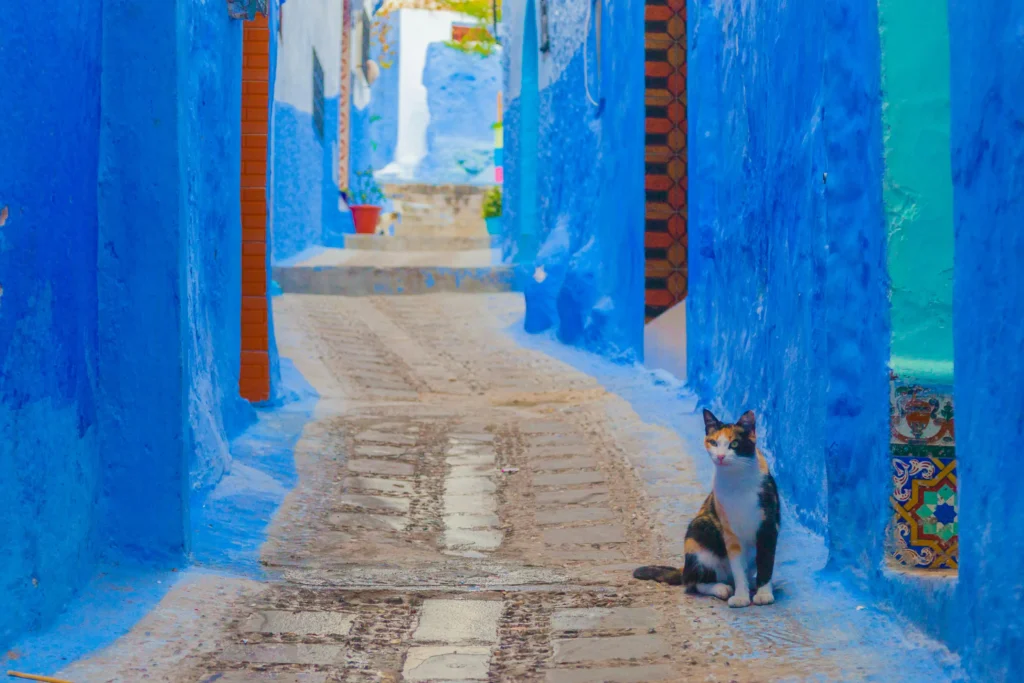
Traditional Riads and Guesthouses
Casa Hassan: A beautifully restored riad in the medina with stunning views and traditional décor. Rates: €80-120/night.
Riad Cherifa: Family-run guesthouse offering authentic hospitality and home-cooked meals. Rates: €40-60/night.
Dar Meziana: Boutique riad with a panoramic terrace perfect for sunset viewing. Rates: €90-130/night.
Modern Hotels and Budget Options
Hotel Atlas Chaouen: Modern amenities outside the medina with parking available. Rates: €50-70/night.
Pension Mauritania: Budget-friendly option in the medina center. Basic but clean. Rates: €20-30/night.
Casa Annasr: Mid-range hotel with excellent breakfast and helpful staff. Rates: €60-80/night.
Local Secret: Book accommodations with terraces or rooftop access—watching sunrise over the blue city is unforgettable and costs nothing extra!
Planning Your Chefchaouen Tour with Eddyafa Travel
Day Trip Options from Fez and Tangier
If you’re short on time, customized day trips from major cities offer an excellent introduction to Chefchaouen. These typically include transportation, guided medina tours, and lunch at a traditional restaurant. However, I strongly recommend staying at least one night to experience the city’s magical atmosphere after day-trippers leave.
Multi-Day Morocco Tour Packages Including Chefchaouen
Chefchaouen Morocco fits perfectly into comprehensive Morocco itineraries. Popular combinations include:
- Imperial Cities + Blue Pearl (8 days): Explore Morocco’s imperial cities plus Chefchaouen
- Mountain + Desert Adventure (10 days): Chefchaouen, Atlas Mountains, and Sahara desert experiences
- Northern Morocco Discovery (6 days): Tangier, Chefchaouen, and Fez
“Every Morocco tour should include Chefchaouen—it’s where travelers fall in love with our country’s gentle soul and artistic spirit.” – Mohamed Eddyafa, Tour Director
Callout Box – Planning Tips: 📋 Essential Planning Checklist:
- Book accommodations 2-3 months ahead for peak season
- Pack layers—mountain temperatures vary dramatically
- Bring comfortable walking shoes for cobblestone streets
- Download offline maps—GPS can be unreliable in the medina
- Learn basic Arabic greetings—locals appreciate the effort!
Frequently Asked Questions (FAQs)
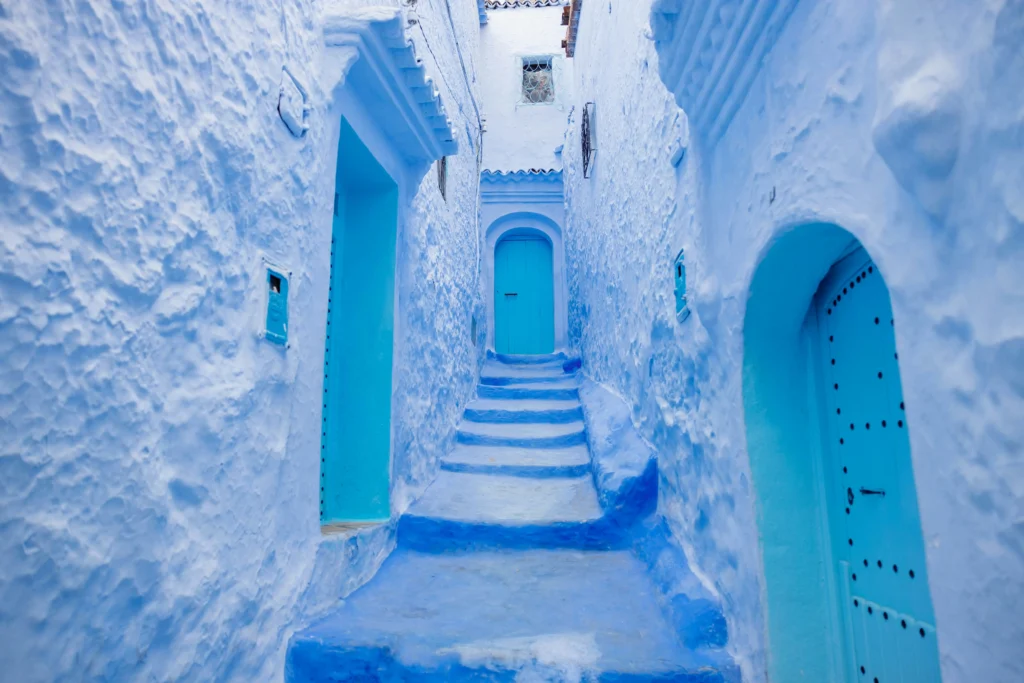
How many days should I spend in Chefchaouen Morocco?
Two to three days is the sweet spot for most travelers. Day one: explore the medina and visit the Kasbah. Day two: hike to Spanish Mosque and explore Ras El Maa. Day three: shopping, relaxation, and deeper neighborhood exploration. If you’re combining with other destinations, one full day captures the highlights, but you’ll miss the peaceful evening atmosphere.
Is Chefchaouen safe for solo travelers?
Absolutely! Chefchaouen is considered one of Morocco’s safest cities, especially for solo female travelers. The crime rate is extremely low, locals are respectful, and the compact medina makes navigation easy. Standard travel precautions apply: don’t flash expensive items, trust your instincts, and inform your accommodation about your plans.
What should I wear when visiting Chefchaouen?
Modest, comfortable clothing works best. While Chefchaouen is more relaxed than other Moroccan cities, covering shoulders and knees shows respect for local culture. Comfortable walking shoes are essential for cobblestone streets. In summer, light, breathable fabrics and a hat are crucial. Winter visits require warm layers for cool mountain evenings.
Can I visit Chefchaouen as a day trip?
Yes, but it’s not ideal. Day trips from Tangier (2 hours each way) or Fez (4 hours each way) are possible but rushed. You’ll miss the magical morning light, evening atmosphere, and chance to interact meaningfully with locals. If time is limited, consider it an appetizer that will make you want to return for a longer stay.
Your Chefchaouen Adventure Awaits
Chefchaouen Morocco isn’t just a destination—it’s a reminder that beauty exists in simplicity, that peace can be found in the most unexpected places, and that sometimes the best travel experiences come from simply slowing down and soaking in the atmosphere.
Whether you’re planning a quick day trip or a longer stay, this blue-washed mountain town will capture your heart and fill your camera with memories. The combination of stunning architecture, warm hospitality, mountain adventures, and authentic cultural experiences makes Chefchaouen an essential stop on any Morocco itinerary.
Ready to experience the magic yourself? Contact Eddyafa Travel to plan your perfect Chefchaouen adventure. Our local expertise and customized tour packages ensure you’ll discover not just the famous blue streets, but the soul of this extraordinary city.
Don’t just visit Morocco—experience it. Your blue-washed adventure in Chefchaouen awaits, and trust me, it will be everything you’ve dreamed of and more.
Related Articles You Might Enjoy:

